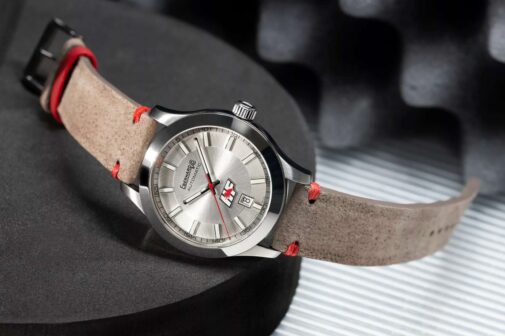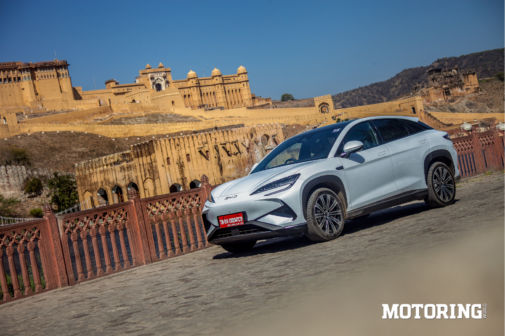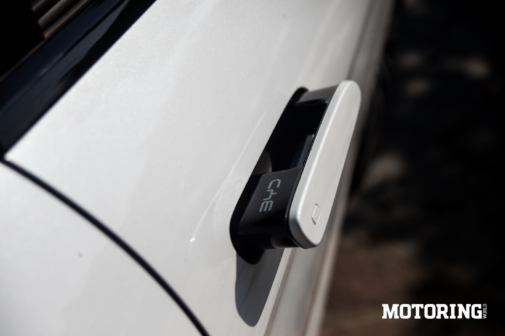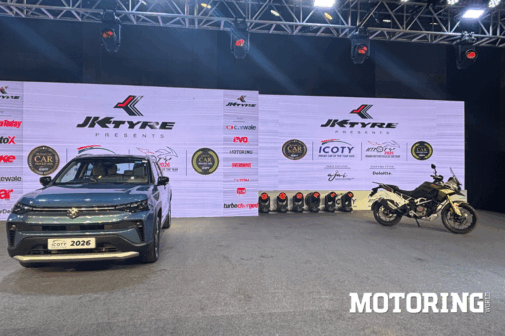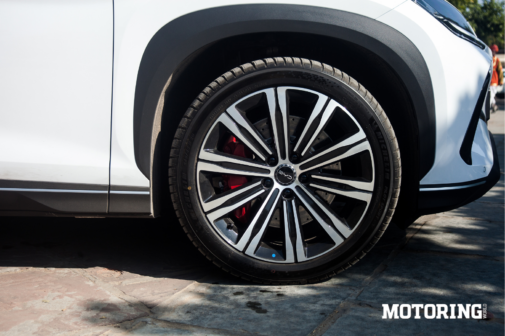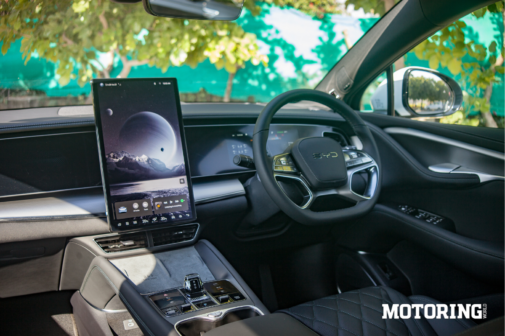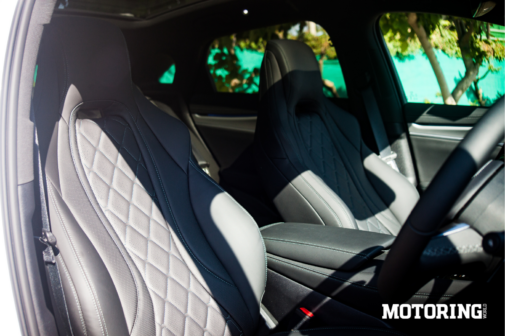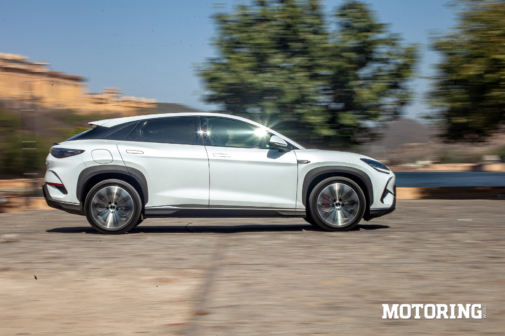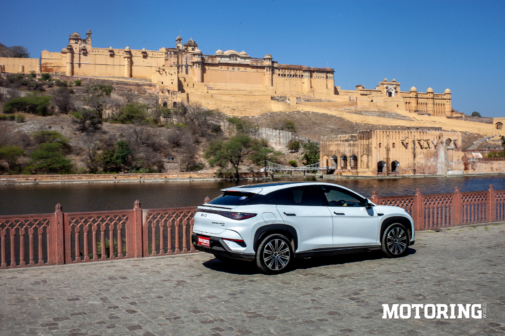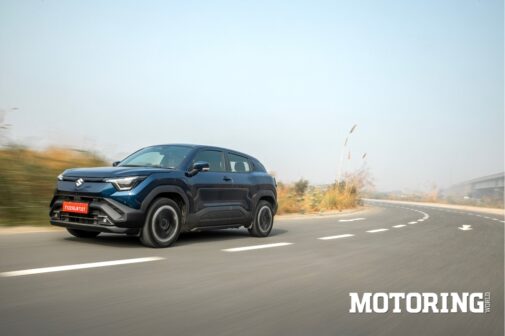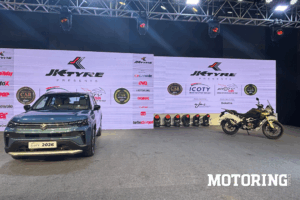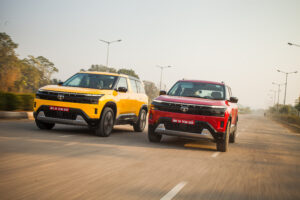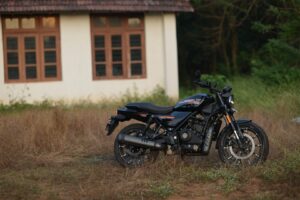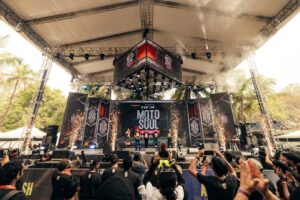India’s premium electric vehicle market is rapidly evolving, particularly in the price bracket of ₹50 lakh to ₹60 lakh. Over the past year, this segment has seen a flurry of activity, with several automakers vying for dominance. The latest entrant here is the BYD Sealion 7, a vehicle that promises quite a lot, but which faces stiff competition from established players like Kia, Hyundai, Volvo, Mercedes-Benz, and BMW. In this crowded field, the Sealion 7 has its work cut out. While BYD has not yet revealed the car’s price, it’s expected to be priced competitively, making it a direct competitor to the OEMs above. But what does BYD bring to the table, and how does it differentiate itself in this competitive segment?
BYD has been making waves globally, as the largest electric vehicle manufacturer in the world. However, in India, the brand is still in its nascent stages, slowly carving out a niche for itself. Drawing a parallel, BYD can be likened to the clothing brand Uniqlo—a brand that offers high-quality products at a mid-premium price point, without overt branding or flashy marketing. Uniqlo is known for its well-designed, practical, and durable clothing; similarly, BYD’s vehicles – including the Sealion 7 – offer a blend of modern design, advanced technology, and solid build quality, without relying on a strong brand identity or heritage.
The Sealion 7, for instance, has a fairly contemporary design with a focus on practicality and functionality. It may not scream luxury or sportiness, but its design is a mix of inspiration from some of the best in the business and BYD’s own innovations. At first glance, the car’s smooth surfaces, pop-out door handles, and lack of a traditional grille give it a distinctly electric vehicle look. The front features LED daytime running lights and subtle BYD branding, while the rear clearly draws inspiration from the Mercedes EQS SUV, particularly in the design of the tail lights and the overall rear three-quarter profile; this is a bit disappointing, given that BYD’s head of design, Wolfgang Egger, is formerly of Alfa Romeo – surely a more original design could have been sketched out.
From the side, the Sealion 7 has a long crossover silhouette, with a sloping roofline that adds a touch of sportiness. The design also has Porsche influences (again, see my point above), particularly in the way the roof line flows into the rear, giving the car a coupe-like appearance. The 20-inch alloy wheels wrapped in Michelin Pilot Sport EV tyres do enhance the car’s looks and contribute to its impressive ride and handling characteristics, which we’ll get to later.
Inside the BYD Sealion 7, you’re greeted by a cabin that exudes quality and attention to detail. The first thing that catches your eye is the massive 15.6-inch rotating touchscreen display (larger than my MacBook screen), which can switch between landscape and portrait modes. This feature is not just a gimmick—it adds a layer of versatility, allowing drivers to customize the display based on their preferences. The user interface (UI) and user experience (UX) are among the best in the industry, offering smartphone-like responsiveness and ease of use.
The cabin is well-appointed, with high-quality materials and a solid build that leaves no room for squeaks or rattles. The seats are comfortable and supportive, offering ventilation and ample space for both front and rear passengers. The panoramic sunroof floods the cabin with natural light, creating an airy and spacious feel. Despite the sloping roofline, rear passengers won’t feel cramped, thanks to the generous legroom and large windows. BYD has also included a host of physical buttons for key functions, such as volume control, drive mode selection, and climate control, ensuring that drivers aren’t overly reliant on the touchscreen. The twin wireless smartphone charging system has a 50W pad, which is another very useful feature. The Sealion 7 is practical, too. The car features a sizeable frunk, with a 58-litre storage capacity, a rarity in this segment. The boot offers 500 litres of space, making it one of the biggest in its class, and the tailgate opens and shuts with a wave of your foot.
Under the hood (you have to be accurate and start saying below the frunk now, for EVs) the Sealion 7 is powered by an 82.56 kWh battery pack, available with both single and dual electric motor configurations; we were driving the dual motor all-wheel drive variant. BYD uses CTB (cell-to-body) technology, which means that its Blade battery is integrated directly into the car’s structure, providing better strength and rigidity. The electric motor produces 523 bhp and 70.36 kgm of torque, delivering impressive performance – 0-100 kph is dismissed in 4.5 seconds, a figure that BYD is so proud of that there’s a 4.5 badge at the back; top speed is a claimed 215 kph. The brand claims a range of up to 567 km on a single charge, and in real-world conditions, the car delivers on this promise. During our test drive, the car displayed a range of 542 km at 98 per cent charge, and after driving approximately 150 km in mixed conditions, the range dropped to 390 km. This level of accuracy in range calibration is commendable, and helps alleviate range anxiety. In terms of performance, the Sealion 7 delivers power in a linear and controlled manner. Even in Sport mode, the car avoids the instant torque-induced wheel spin that some EVs are prone to, offering a more relaxed and composed driving experience. The car’s regenerative braking system has two modes—Standard and High—with the latter being more aggressive in harvesting energy and sending it back to the battery.
The Sealion 7’s ride and handling are well-suited to Indian road conditions. The car’s low centre of gravity, thanks to the placement of the battery pack, enhances stability and cornering ability, although the steering wheel feels quite numb, and the brake pedal is spongy. The Michelin Pilot Sport EV tyres play a significant role in providing excellent grip and absorbing road imperfections, making the ride comfortable without being overly stiff; however, some may find it a bit too ‘floaty’. While it may not offer the sporty handling of some German rivals, the Sealion 7 strikes a good balance between comfort and agility. Safety is a top priority for BYD, and the Sealion 7 comes equipped with a host of features, including 11 airbags and a comprehensive suite of advanced driver-assistance systems (ADAS).
The Sealion 7 enters a highly competitive space, dominated by some of the biggest names in the automotive industry. The Korean duo of Kia and Hyundai have made inroads with their offerings, the Kia EV6 and the Hyundai Ioniq 5. Both vehicles are known for their futuristic design, cutting-edge technology, and strong performance. From the Swedish corner, Volvo brings its C40 Recharge and EX40, which are renowned for their Scandinavian design ethos, safety features, and eco-friendly credentials. Meanwhile, the German giants, Mercedes-Benz and BMW, are not far behind. Mercedes-Benz offers the EQA, a compact SUV that combines elegance with electric efficiency, while BMW has recently launched the iX1 LWB, a long-wheelbase version of its popular iX1, priced aggressively at ₹49 lakh.
The Sealion 7 offers a modern design, great tech in terms of battery performance, and practical features, all wrapped in a well-built package. While BYD may not yet have the cachet of its German or Korean rivals, the Sealion 7 is a strong step in the right direction, and is a genuine alternative for those looking to step away from the established players.









